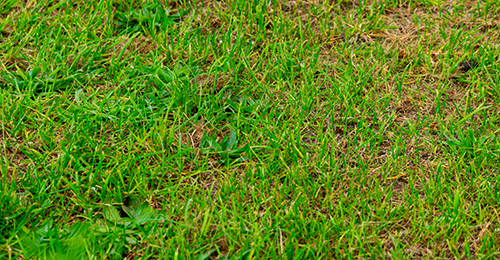
Goosegrass is an annual summer weed that is often confused with crabgrass and dallis grass.
Learn what goosegrass looks like and how it differs from other weeds in our guide below.
Characteristics of Goosegrass

Goosegrass is identified by the following traits:
- Many stems grow from one common root in a bunch or rosette
- Base of weed is silver or gray
- Dark green leaves are flat or slightly folded
- Stems are often hairy or tufted near the base of the weed, stems are smooth as they grow out farther
- Weed is half an inch to 2 feet tall
- Seeds at the end of the leaves look like a zipper
- White flowers with 4 petals each bloom from late summer to early fall
Where and When Does Goosegrass Grow?

Goosegrass is most commonly found in yards with thin strands of grass, compacted soil, and poor drainage. Areas of the lawn that are mowed short and have high foot traffic are most likely to have goosegrass.
The weed can be found in both warm and cool season turf and will thrive in sunlight and moisture. Goosegrass grows throughout the United States.
Goosegrass grows in the late spring and early summer when soil temperatures reach 63-65 degrees, often germinating after pre-emergent herbicides have been applied and broken down in the soil. For this reason, goosegrass is hard to prevent as it misses the first pre-emergent application window. A split pre-emergent application will help lengthen the effectiveness of the treatment. Learn more in our Goosegrass Prevention Guide.
If you believe you may have goosegrass, learn more about where to find it in your yard in our Goosegrass Inspection Guide. Click the right arrow below to read more.


